The Universe itself may be unnatural
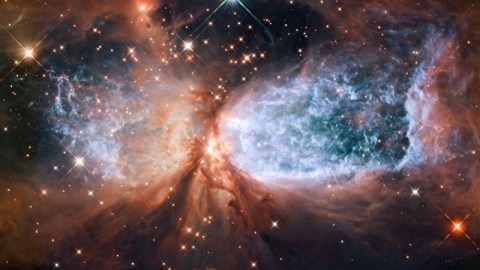
Why does the Universe have the properties it has? There may be no natural reason at all.
“When you listen to a lecture, you should not have any idea of yourself. You should not have your own idea when you listen to someone. Forget what you have in your mind and just listen to what he says. To have nothing in your mind is naturalness. Then you will understand what he says. But if you have some idea to compare with what he says, you will not hear everything; your understanding will be one-sided; that is not naturalness.” –Shunryu Suzuki
When it comes to the physical Universe, we fully expect things obeying the same fundamental laws to unfold in similar fashions, and to be comparable to one another today. By the same token, if they obey vastly different rules, we expect them to be different from one another today. If aspects of the Universe that should be very different turn out to be similar, we call this a “coincidence problem.” If aspects that we expect should be similar turn out to be very different, we call that a “hierarchy problem.” In general, these fine-tuning problems are puzzles that either have a natural explanation for why these coincidences or hierarchies exist, or we have to face the most dissatisfying solution we could ask for: the Universe is simply unnatural.
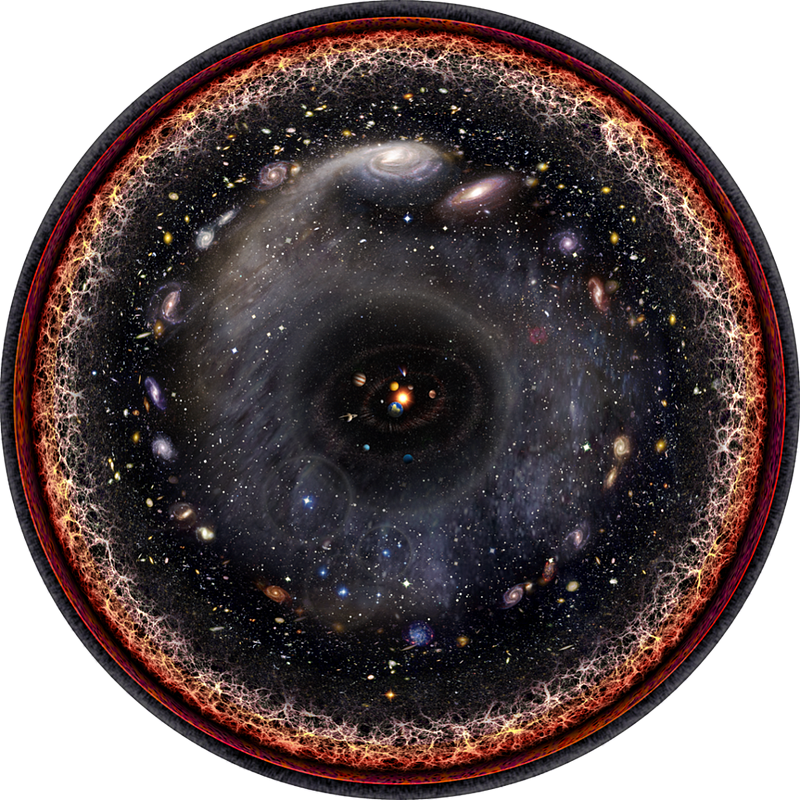
There are lots of examples of these fine-tuning problems in the Universe, including the facts that:
- The Universe has similar amounts of dark matter and dark energy today, which is a coincidence problem.
- The fact that the masses of the fundamental particles are ~1017–1023 orders of magnitude lower than the Planck mass, which is a hierarchy problem.
- The fact that the spatial curvature of the Universe is indistinguishable from 0, which is a coincidence problem.
- The fact that the strong interactions exhibit no CP-violation whereas the weak ones do, a hierarchy problem where a particular rate is suppressed by a factor of a billion or more from what’s expected.
- And the fact that the neutrino mass fraction, the normal matter mass fraction, and the dark matter mass fraction are all within 2 orders of magnitude, another coincidence problem.
It’s true that all of these are simply facts about the Universe. The question, when it comes to naturalness, is whether these facts have explanations or not.
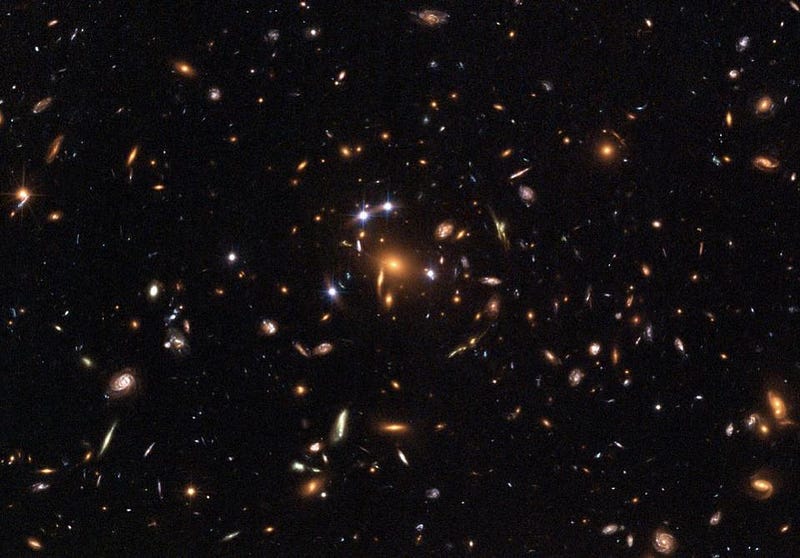
It’s possible that these facts simply represent the way the Universe is, and that there is no physical explanation underlying it. That the laws and properties and constants of the Universe simply are what they are, and there isn’t any deeper reason for it than that. This is possible, of course, and there’s never any way to rule this out. On the other hand, it’s the equivalent of giving up on science. Accepting that this is the way the Universe is, with no further explanation, means a cessation to investigations, and an end to the attempt that science can make: to come up with a physical explanation for the physical Universe.
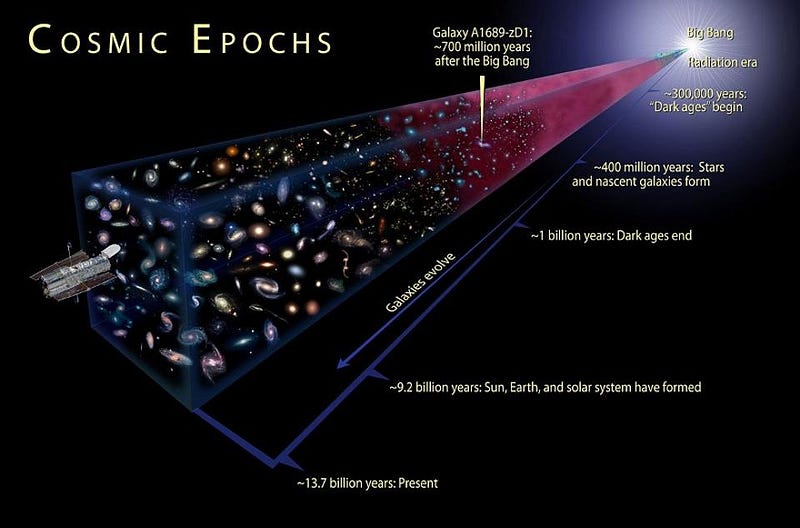
The other option — which may or may not be successful — is to seek a cause for what appears to be a finely-tuned Universe. And just to be clear, a cause, in this context, means a set of physical dynamics that compels the Universe to be this particular way. For the examples above:
- perhaps there’s a mechanism that forces dark energy to take on the value it has;
- perhaps there’s a higher-energy physics phenomenon that protects the masses of the Standard Model particles down to their low-energy values;
- perhaps there’s a mechanism to stretch the Universe’s curvature asymptotically to zero;
- perhaps there’s a new symmetry that suppresses CP-violation;
- and perhaps the physics which gives rise to neutrino masses and dark matter is coupled to the normal matter density.
The great thing about this latter assumption — that there are dynamics governing these apparent coincidences and hierarchies — is that we can build models to test them out.
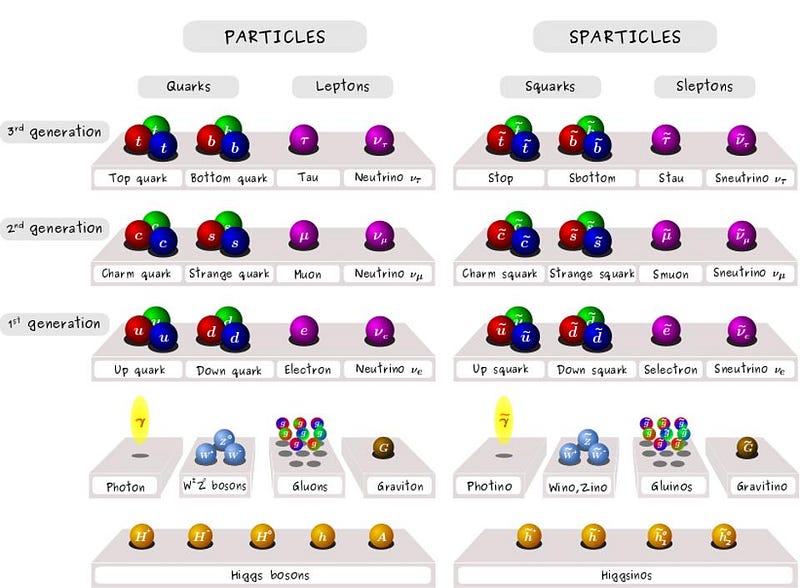
This is where ideas like supersymmetry, cosmic inflation, the Peccei-Quinn symmetry (and axions, a dark matter candidate), and the see-saw mechanism for neutrino masses comes from. You look at the Universe, you see that it is a certain way, and rather than simply accept “this is how it is,” you ask, “what could have caused the Universe to wind up this way?” You can then test out how well your ideas line up with the Universe we have in other regards, and look for new testable predictions that arise.
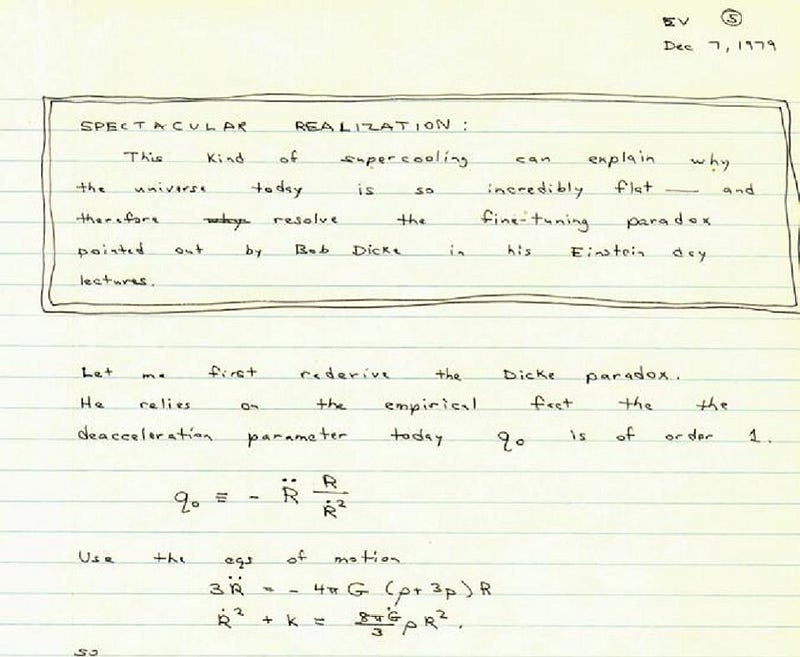
Although at least one of these ideas has been tremendously successful — cosmic inflation — this is not always a fruitful line of investigation. Some ideas that you can arrive at are theoretically interesting, but don’t pan out when you put them to the test. No supersymmetric particles have been discovered; no axions are found in microwave cavities; the neutrinoless double-beta decay experiments that would provide evidence for a see-saw mechanism have seen no such decays. Looking at a finely-tuned system and asking why it’s tuned that way can lead to interesting possibilities, but nothing is certain until you confront it with the Universe itself. More often than not, as you may well imagine, the Universe shakes its head “no” and refuses to give up its secrets.
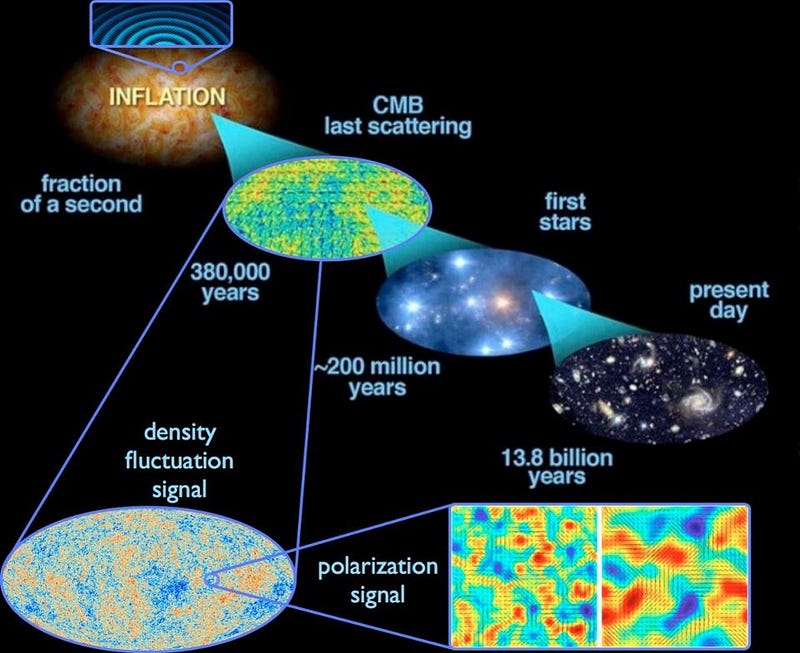
But inflation is particularly interesting when it comes to the question of spatial curvature. There were originally three fine-tuning problems that served as motivation for it:
- The fact that the Universe was the same exact temperature in all directions to 99.99%+ accuracy, despite those distant regions not having time to exchange information. (The horizon problem.)
- The fact that the Universe was observed to have zero spatial curvature (less than 0.25% today), despite the wide variety of possibilities that would lead to a habitable Universe today. (The flatness problem.)
- And the fact that there were no high-energy, relic particles that an arbitrarily hot-and-dense Universe would inevitably lead to. (The monopole, or relic, problem.)
The way inflation works is it takes a small patch of Universe where conditions are right for inflation to begin, and then it exponentially stretches that space across the Universe. It takes a small, connected region and spreads its properties out over a region far larger than the observable Universe today. By the time inflation ends and gives rise to the hot Big Bang, it’s indistinguishable from flat.
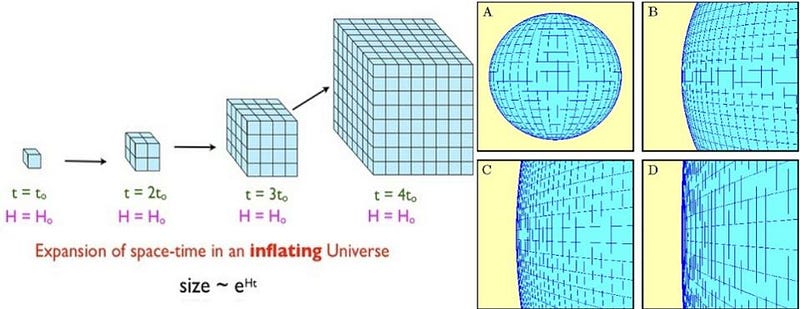
But the same physics that gives rise to the density fluctuations in the Universe, which create the seeds of the cosmic large-scale structure we see today, should also give rise to fluctuations in the spatial curvature of the Universe. As our measurements of the Universe’s density get better and better, to perhaps five significant digits instead of 2 or 3, we should see that there is, in fact, a non-zero curvature to space. Whether it’s positive or negative, and whether it’s 0.01% or 0.001% (or thereabouts) ought to be dependent on quantum fluctuations; there shouldn’t be a fine-tuning for this value.
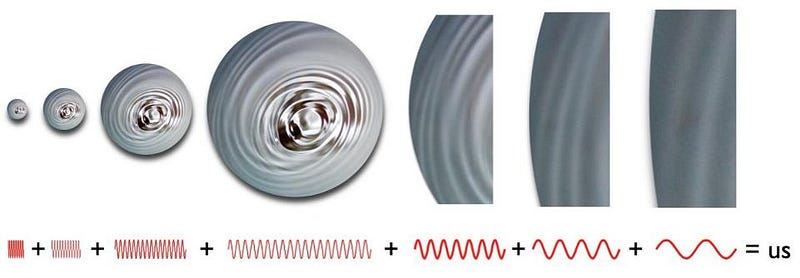
Of course, perhaps nature will surprise us again. Perhaps we’ll discover no spatial curvature all the way down as far as we’ll ever measure. Perhaps we’ll discover high-energy, massive relics that shouldn’t exist after all. Or, perhaps there never was any cosmic inflation, and the hints that the Universe gave us were simply the properties it was born with. The Universe is under no obligation to have an explanation for the properties we observe; it may yet prove to be unnaturally fine-tuned. But as long as we have hope and new ideas, we’re not ready to give up yet. The Universe may be unnatural, but as long as we entertain the possibility that dynamics can explain what we have, there’s something worthwhile to investigate.
Ethan Siegel is the author of Beyond the Galaxy and Treknology. You can pre-order his third book, currently in development: the Encyclopaedia Cosmologica.





